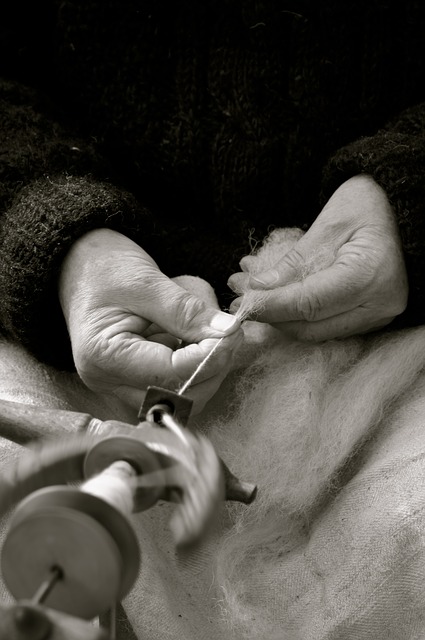Three Minute Wisdom Knowledge is not enough. True leadership is informed by wisdom. The ideas presented here are intended to arouse your curiosity, provoke your thinking and encourage insightful action to help you achieve the things that matter.

Think of someone you know who finds true joy in their work. What are they like to be around? I’ll bet you find them dedicated, inspiring, energizing, and fun to work with. And I’ll bet you would like more of them on your team.
Such people shouldn’t be rare, work is a natural place for us to find joy and fulfillment. But many people I see today, perhaps the majority, can’t seem to find a source of joy in their work. This is both tragic and unnecessary because the things that bring us great personal joy are the same things that open up our creativity and energy. What we want from our work and what our work wants from us both come from the same source.
I know a hospital executive who exemplifies this principle. She retired last month after a long and rewarding career in healthcare. For the last several years, she ran a large hospital in Northern California, a daunting job in today’s healthcare environment. She maintained high standards for quality patient care in the face of tremendous fiscal pressure and skyrocketing healthcare costs. Every day, she worked to maintain the delicate network of relationships that must work together in a well run medical center: doctors, nurses, union officials, regulators, administrators, insurers, engineers, vendors, volunteers, and auxiliary service providers.
In a job that was extremely challenging and highly stressful, she not only survived but found fulfillment and joy. She had a strong vision of how healthcare should be experienced by the patient: not just medically sound, but caring, compassionate, and nurturing. She wanted every caregiver to treat the patient with the same attention and human touch they would give to a close relative. It was her relentless pursuit of this vision that sustained her through hard times. As she eloquently and constantly expressed this vision, it became infectious, spreading throughout the culture of the hospital.
The joy this executive found in her work is available to all of us. By joy, I do not mean just excitement or happiness (although there is nothing wrong with these emotions). I am talking about the deep satisfaction we feel when we are engaged in an activity that is meaningful to us. Joy is not manufactured by expending effort; it arises naturally when we participate in something meaningful.
As a leader, renewing your connection to joy is obviously important for you personally because it adds to your own sense of well being and fulfillment. But it is also important for those you lead. Perhaps the biggest barrier for most people is the false belief that they shouldn’t expect joy from their work. By actively demonstrating your passion and purpose, you serve as a role model for how work can be engaging and rewarding for others.
For a simple model on how to inspire joy at work, I like the book Awakening Corporate Soul (1999), by Eric Klein and John Izzo. Klein and Izzo posed a simple question to thousands of people to find out what made them feel fully alive at work. They called it the “150 percent question.” The question was this:
“Think of a job or project that brought out 150 percent of your energy and commitment, where you were fully engaged, when your performance was at its peak, and you found the greatest satisfaction in your work. What was it that brought out that 150 percent for you?”
When they looked at the responses, Klein and Izzo saw that people usually took one of four paths that lead to renewal, commitment and joy at work. They called these four the Path of Self, the Path of Contribution, the Path of Craft, and the Path of Community. I have summarized each path below and included questions to help you think about your own connection to what brings you meaning and joy.
The Path of Self This is a path of self-discovery and self-definition. Too often at work we mistakenly believe that we cannot express our true self. We adopt a false persona, a mask, that we feel is safe in the workpla ce. But many people answered the 150 percent question by relating experiences where they felt fully committed because their work was a true expression of their authentic selves – their passions, their values, and their personal vision. To connect with this path, ask yourself:
ce. But many people answered the 150 percent question by relating experiences where they felt fully committed because their work was a true expression of their authentic selves – their passions, their values, and their personal vision. To connect with this path, ask yourself:
- What are my most important values?
- What am I passionate about?
- What is the vision I am trying to accomplish?
- What would be sacrificed if I were not here to do this work?
- What is my unique contribution?
- How do I express my passion and values at work?
- What drew me to this line of work in the first place?
- Am I afraid to express my true self at work? If so, why?
- How do I develop and grow as a person through my work?
The Path of Contribution We have all experienced the pride and satisfaction that comes from serving a goal that is larger than our personal needs. This is an energizing and expansive feeling and it is no surprise that the Path of Contribution showed up prominently in Klein and Izzo’s research. We reaffirm our own humanity when we expend our effort in service to others in a way that makes a difference. Questions that can reveal this path for you include:
- Who do I serve in my work? Who benefits from my efforts?
- Why do my customers care about what I do?
- What larger goal is accomplished?
- What is the greater purpose of my work? What is my mission?
- How does what I do make a difference in the world?
- How does our organization give back to the community?
 The Path of Craft Third is the Path of Craft. In this path, people described times when they felt energized by learning and mastery. We experience artistry when we exercise our natural skills and talents at the highest levels of excellence. This is the path of the craftsman who exercises skillful attention to detail to produce things of value. You know you are on this path when you have thrown yourself into your work with creativity and total absorption and have lost yourself in the present moment. To awaken the Path of Craft, ask yourself these questions:
The Path of Craft Third is the Path of Craft. In this path, people described times when they felt energized by learning and mastery. We experience artistry when we exercise our natural skills and talents at the highest levels of excellence. This is the path of the craftsman who exercises skillful attention to detail to produce things of value. You know you are on this path when you have thrown yourself into your work with creativity and total absorption and have lost yourself in the present moment. To awaken the Path of Craft, ask yourself these questions:
- What am I really good at?
- What are my unique gifts and talents?
- What skills do I want to develop?
- How do I contribute to excellence?
- What is the artistry in my work? How do I create beauty?
- What practical outcomes do I produce?
- What keeps me in the present moment?
The Path of Community Last is the Path of Community, where people find meaning in the connection they have with others at work. The word community connotes more than terms like friendship or teamwork; it implies a level of trust and relationship that is deeper and more interdependent. Use these questions to explore where you are on the Path of Community:
- What relationships are important to me at work?
- Who do I touch at work?
- What is the camaraderie I share with others?
- What common ground do we create together?
- How do we give each other feedback?
- What do we achieve together that I could not do alone?
- What stories do we create at work?
- Who is the person at work I can always count on to listen?
- How do we celebrate together?
I hope these questions help you explore your own path to discovering and sustaining the joy you feel through your work. Better yet, start a larger conversation. Discuss the 150 percent question, or the questions in this article, with your whole team and listen to their answers. Joy feels even better when you share it around.

Share the wisdom. If you found this article useful, pass it on.